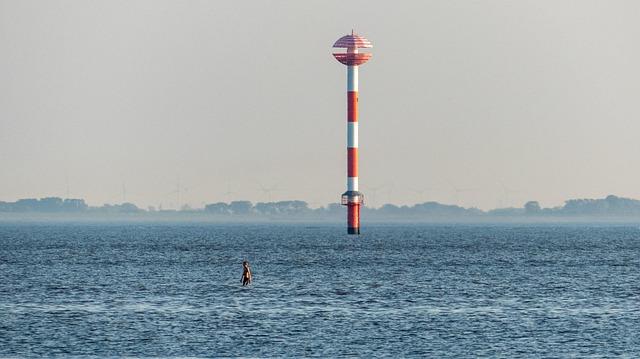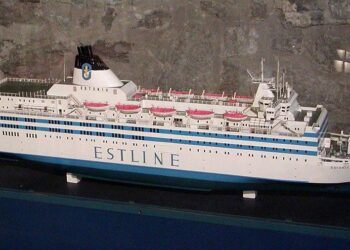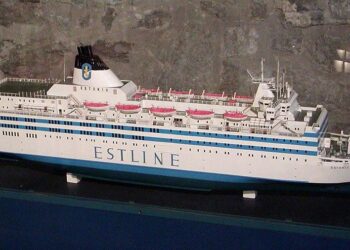Disrupted Signals: How Estonia Found Itself on the Front Lines of GNSS Interference in Europe
In an age where precise navigation and timing are critical to modern society, the integrity of Global Navigation Satellite Systems (GNSS) stands as a linchpin for technology-dependent economies. However, as the reliance on these systems grows, so too do the threats posed by interference and jamming. It is within this increasingly precarious landscape that Estonia has emerged as an unexpected battleground for GNSS disruption in Europe. In the January/February 2025 issue of Via Satellite magazine, we delve deep into Estonia’s unique geopolitical position, the multifaceted challenges of GNSS interference, and the nation’s response to emerging threats. With its strategic location bordering Russia and its robust digital infrastructure, Estonia’s experiences offer critical insights into the broader implications of GNSS vulnerabilities across the continent. This article explores the implications of disrupted signals not just for Estonia, but for the future of navigation and connectivity in Europe as a whole.
Estonias Uneasy Position in Europes GNSS Landscape
Estonia’s geographical and geopolitical positioning puts it in a precarious situation within Europe’s Global Navigation Satellite System (GNSS) landscape.The country’s proximity to both Russia and the Baltic sea makes it a hotspot for signal interference, leading to heightened security concerns. Moreover, with the increasing reliance on GNSS technology across various sectors, including transportation, agriculture, and telecommunications, the stakes have never been higher. stakeholders must grapple with several challenges:
- Increased incidents of jamming: Reports indicate a rise in GNSS jamming activities,often attributed to neighboring nations,leading to disruptions in vital services.
- Infrastructure vulnerabilities: Critical infrastructure, such as airports and shipping ports, are notably susceptible to GNSS disruptions.
- Regulatory and technical response: Estonia’s government and industries are now focusing on strengthening regulations and investing in technologies to counteract GNSS vulnerabilities.
The interplay of these factors compels Estonia to take proactive measures. In collaboration with NATO allies and European Union partners, Estonia is exploring alternative navigation methods and investing in domestic solutions. This includes research into enhanced multi-frequency GNSS systems and the development of local augmentation services that can provide resilience against interference. Additionally, Estonia is assessing its cybersecurity frameworks to protect against potential exploits that could exacerbate GNSS disruptions.
| Key Actions | Description |
|---|---|
| Investment in Technology | Allocate funds for the development of resilient GNSS alternatives. |
| International Collaboration | Work with NATO and EU for shared expertise and resources. |
| Public Awareness Campaigns | Educate businesses and citizens on GNSS vulnerabilities and mitigation strategies. |

The Rise of GNSS Interference and Its Implications for National Security
The emergence of Global Navigation Satellite Systems (GNSS) interference has caught the attention of military and governmental bodies across Europe, with Estonia recently finding itself in a precarious position. In a region marked by geopolitical tension, the rise in intentional and unintentional jamming of GNSS signals raises significant concerns regarding national security. This interference can disrupt critical systems, including transportation networks, emergency services, and military operations, thereby complicating response strategies in a crisis. Notably, as the Baltic states confront an increase in opposed activities, understanding the implications of GNSS vulnerability has become paramount for ensuring the integrity of national defense mechanisms.
Recent incidents have shed light on how GNSS interference manifests in operational challenges. As a notable exmaple, during military exercises in 2024, several Estonian units experienced significant disruptions attributed to both localized jamming and broader regional interference. Such incidents highlight the need for enhanced resilience in satellite navigation technologies. Key measures that need to be prioritized include:
- Development of anti-jamming technologies: Investment in advanced equipment that mitigates risks associated with GNSS disruptions.
- Collaboration with NATO: Strengthening partnerships to establish a coordinated response to GNSS threats.
- public awareness campaigns: Educating the general public and key sectors on the implications of GNSS interference.
- Research initiatives: Promoting research into alternative navigation systems that operate independently of satellite networks.
Furthermore, as Estonia evaluates its defense posture, adapting policies to address the vulnerabilities exposed by GNSS interference will be crucial. A recent consultation paper by the Estonian Ministry of Defense identifies strategic steps to bolster the nation’s cyber defense and signal resilience. these strategies include the establishment of a dedicated GNSS monitoring centre to detect and respond to interruptions in real-time. The anticipated outcomes can be summarized in the following table:
| Strategy | expected Outcome |
|---|---|
| GNSS Monitoring center | Real-time detection of interference |
| Collaborative Training Exercises | Improved response readiness among military units |
| Investment in Alternative Systems | Reduced dependence on GNSS |
As the landscape of electronic warfare evolves, nations like Estonia must remain proactive and adaptive to ensure sovereignty and security in a world increasingly dependent on precise navigation capabilities.

Technological Challenges: Identifying and mitigating jamming Threats
As GNSS (Global Navigation Satellite System) technology becomes increasingly crucial for various sectors, Estonia’s experience underscores the pressing need to address jamming threats effectively. Identifying the sources of interference is a complex task, often compounded by the rapid evolution of jamming methods employed by malicious entities. In recent years,Estonia has invested in advanced detection technologies to pinpoint jamming activities,utilizing RF spectrum analysis and network monitoring tools to enhance situational awareness.Moreover, collaboration with international partners has proven essential in sharing intelligence and developing unified responses to electronic threats.
Mitigating the impact of jamming requires a multi-faceted approach that incorporates both technology and policy.Key strategies being deployed include:
- Adaptive Signal Processing: Implementing systems that can dynamically tune to different frequencies to avoid jamming.
- Redundant Systems: Establishing backup navigation systems such as inertial navigation or other alternative GNSS to maintain operational capabilities.
- Public Awareness Campaigns: Educating users about potential threats and best practices for minimizing the risks of interference.
In addition to these strategies,fostering resilience among critical infrastructure operators is vital. A recent survey of Estonia’s key sectors has revealed that over 70% of organizations have increased their security measures in the past year alone, focusing not only on direct technological solutions but also on enhancing organizational protocols and response training.

Policy Recommendations for Strengthening GNSS Resilience
Considering recent GNSS disruptions, Estonia presents a model for bolstering national resilience against interference. Key to this approach is establishing robust partnerships across multiple sectors, including technology, government, and private industry. This collaborative strategy can include:
- Enhanced Cybersecurity Protocols: Strengthening the digital security of GNSS infrastructure to mitigate cyber threats.
- investment in Alternative Navigation Systems: Developing and integrating diverse technologies such as inertial navigation and local positioning systems.
- Public Awareness Campaigns: Educating local communities and businesses about GNSS vulnerability and alternative solutions.
Moreover, international cooperation is crucial to create a unified response framework for GNSS interference. This could involve:
- Information Sharing Networks: Establishing protocols for sharing data on GNSS disruptions among countries.
- joint Training Exercises: Conducting collaborative drills to prepare for possible GNSS outages.
- Research and Development Initiatives: Promoting cross-border projects to innovate resilient navigation technologies.
| Area of Focus | Proposed Action |
|---|---|
| Cybersecurity | Upgrade GNSS infrastructure security |
| Alternative Systems | expand non-GNSS navigation options |
| Public Initiative | Launch awareness and education campaigns |
| International Efforts | Facilitate cross-border information sharing |

International Collaboration: Building a Unified Response to GNSS Vulnerabilities
The recent surge in GNSS vulnerabilities has compelled nations to collaborate more closely in developing comprehensive strategies and responses. Estonia, situated at the crossroads of European geopolitics, has taken proactive measures by coordinating with both NATO and the EU to fortify its GNSS infrastructure. Key initiatives include:
- Joint Exercises: Regular exercises simulating GNSS disruptions to assess response capabilities and enhance interoperability.
- information Sharing: Establishing a coalition for timely sharing of intelligence regarding GNSS threats and interference incidents.
- Research Collaborations: Partnering with academic institutions and technology firms to advance anti-jamming technologies and alternative navigation methods.
Through these efforts, Estonia aims to build a resilient framework that not only addresses its own vulnerabilities but also strengthens the defenses of neighboring countries. The initiative underscores the growing recognition of GNSS as a critical infrastructure whose fragility can have far-reaching implications. A collective response strategy includes:
| Strategic Focus | Expected Outcomes |
|---|---|
| Enhancing Signal Integrity | Reduced instances of GNSS interference |
| Developing Backup Systems | Increased resilience and reliability of navigation |
| Strengthening Policies | Unified regulatory frameworks for GNSS usage |
This collaborative approach not only amplifies estonia’s capacities to counter GNSS threats but also sets a precedent for international entities to prioritize cooperation in safeguarding vital navigation systems.

Future Outlook: Innovations in Navigation Technology and Strategy
The landscape of navigation technology is rapidly evolving, driven by both necessity and innovation. Estonia’s frontline experience with Global Navigation Satellite System (GNSS) interference has prompted significant advancements in the development of resilient navigation strategies. As nations confront the challenges posed by signal disruptions—whether naturally occurring or malicious—there is a clear push towards incorporating multi-layered approaches that utilize a combination of satellite-based, terrestrial, and alternative navigation systems. Key innovations include:
- Advanced Signal Processing: enhanced algorithms that improve the detection and mitigation of interference.
- Augmented Reality Navigation: Systems that overlay navigation data onto real-world environments to provide situational awareness.
- Integrated Sensor Fusion: Combining data from GNSS, inertial measurement units (IMUs), and visual sensors to create more reliable navigation solutions.
In this rapidly changing environment, collaborative efforts among governments, industry, and academia are essential for developing robust navigation strategies.Moreover, lessons learned from Estonia’s experiences are guiding international standards and policies aimed at making navigation systems more resilient against disruptions. A focus on cybersecurity measures further underscores the requirement for secure navigation infrastructures, as seen in the ongoing research into blockchain technology for integrity and security. The table below highlights some promising innovations in navigation technology:
| Innovation | Description | Potential Impact |
|---|---|---|
| Quantum Navigation | Utilizes quantum technology to enhance accuracy. | Precision in urban canyons and signal-restricted areas. |
| Low-Earth Orbit (LEO) Satellites | Deploying a network of satellites at lower altitudes. | Reduced latency and improved signal integrity. |
| Trusted Positioning systems | integrates multiple data sources for verification. | Increased trust in navigation in critical applications such as aviation and autonomous vehicles. |

The Conclusion
Estonia’s experience with GNSS interference not only highlights the vulnerabilities of satellite navigation systems but also serves as a critical case study for Europe and the world. As nations increasingly rely on GNSS for national security, transportation, and interaction, the incidents in Estonia underscore the need for robust countermeasures and international cooperation. The Estonian government’s proactive approach in responding to these threats demonstrates a model for how countries can navigate the complex landscape of radio frequency interference. As technology continues to evolve and the demand for reliable GNSS grows, the lessons learned from Estonia will undoubtedly play a pivotal role in shaping future policies and initiatives aimed at safeguarding satellite navigation systems. The path forward will require continuous vigilance,innovation,and collaborative efforts across borders to ensure that the skies remain clear for navigation and communication. As we look ahead, the global community must remain aware of these challenges and work collectively to protect the integrity of GNSS for generations to come.













